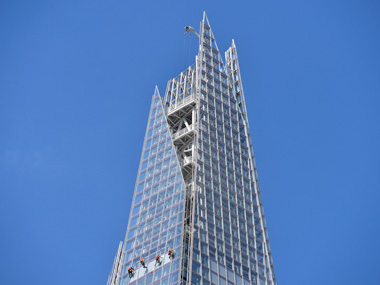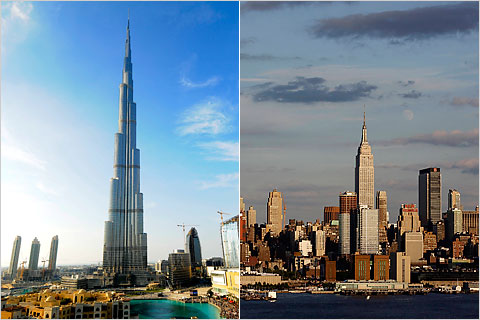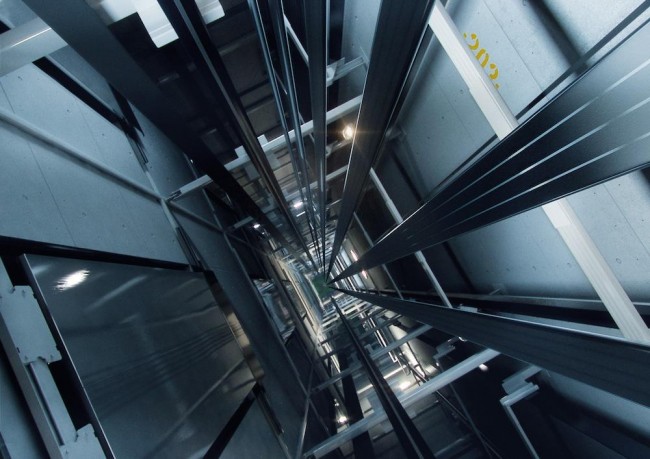When I was a young man I visited the Empire State Building in New York, seen on the right in the image below. It was at the time the tallest human-made structure in the world. Today it is number 22 among world skyscrapers with towers like the Burj Khalifa in Dubai, to the left of in that same image, making the Empire State look quite small.
What limited the height of buildings at the time the Empire State was constructed was a combination of materials and design. With load bearing directed to the outer walls a building needed a counter weight in the base and tiered construction to achieve height. But the technology of skyscraper construction changed in the years that followed. Glass towers with concrete cores bearing the load became the standard for skyscrapers.
Today the Burj Khalifa, to rise to its height, requires a strong tripod base containing poured concrete and steel pylons to give stability to its massive structure above. It combines the technologies of both glass-clad and load-bearing outer wall construction. But is there a limit to how tall a building can be and is the Burj pretty much at that limit? Not according to design engineers who believe buildings a kilometer or even a mile high are possible.
Today most engineers will tell you that the limit of vertical height in buildings has more to do with the steel cable in elevator shafts than any other factor. Known in the industry as the “rope,” conventional materials have limited the travel distance of elevators to about 500 meters (1,640 feet). As buildings have been getting taller elevator transportation has become more problematic. That’s because a single elevator with conventional steel rope carrying 24 passengers consumes 130,000 Kilowatt hours of energy per year and weighs up to 27,000 kilograms (almost 60,000 pounds). And that elevator rope is subjected to severe strains. In fact on windy days building sway can put a steel-cabled elevator out of service.
So Kone, a Finnish-based company, decided to create a rope that could withstand building sway and manage weight load while reducing the amount of energy needed for operation. Called the UltraRope, it is composed of a carbon fiber core with a high-friction coating. UltraRope resonates to a different frequency than steel and other building materials and as a result provides stability for the elevator shaft and compartment even on the windiest of days. With UltraRope an elevator would no longer be limited to a 500 meter run. In Fact, Kone believes UltraRope equipped elevators can double the distance an elevator can travel vertically.
Kone is keeping a tight lid on the formula it has used for the carbon fiber and coating in its new rope. With Earth’s cities increasing urban population density it is expected that vertical construction will dominate requiring taller structures. According to the Council on Tall Buildings and Urban Habitat, nearly 600 tall buildings over 200 meters in height are planned in the next few years. Kone sees itself playing a critical role in making the elevator rides in these dwellings a much more pleasant experience.











